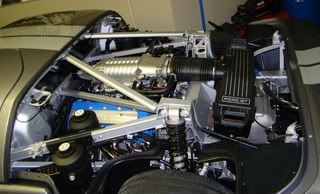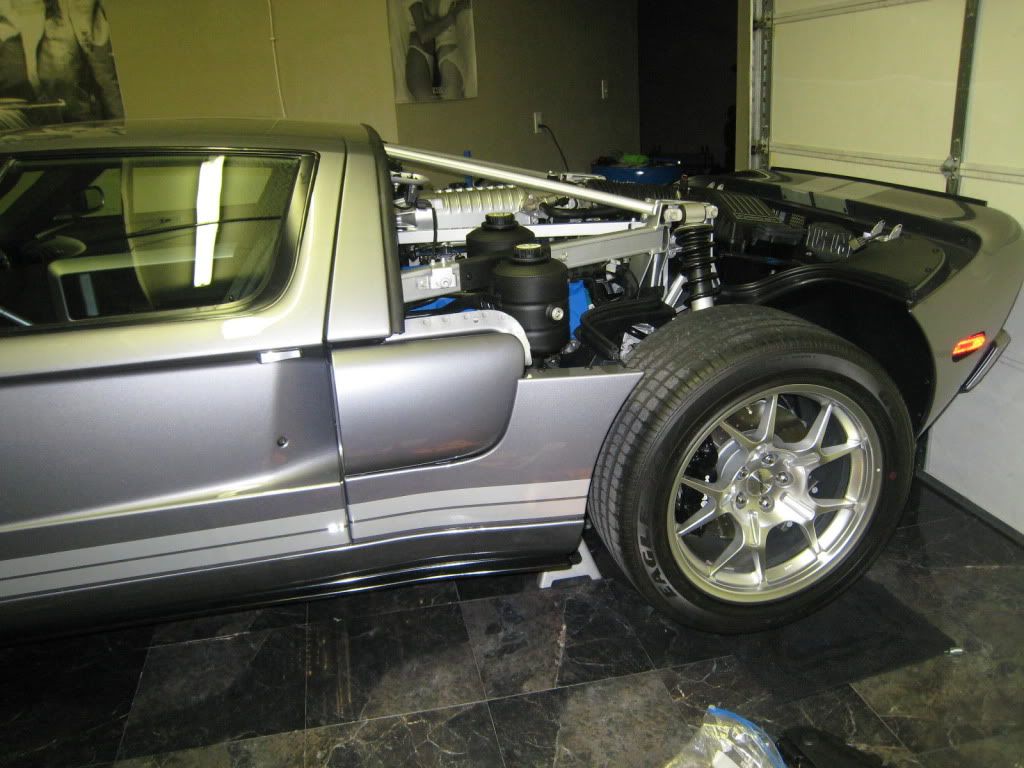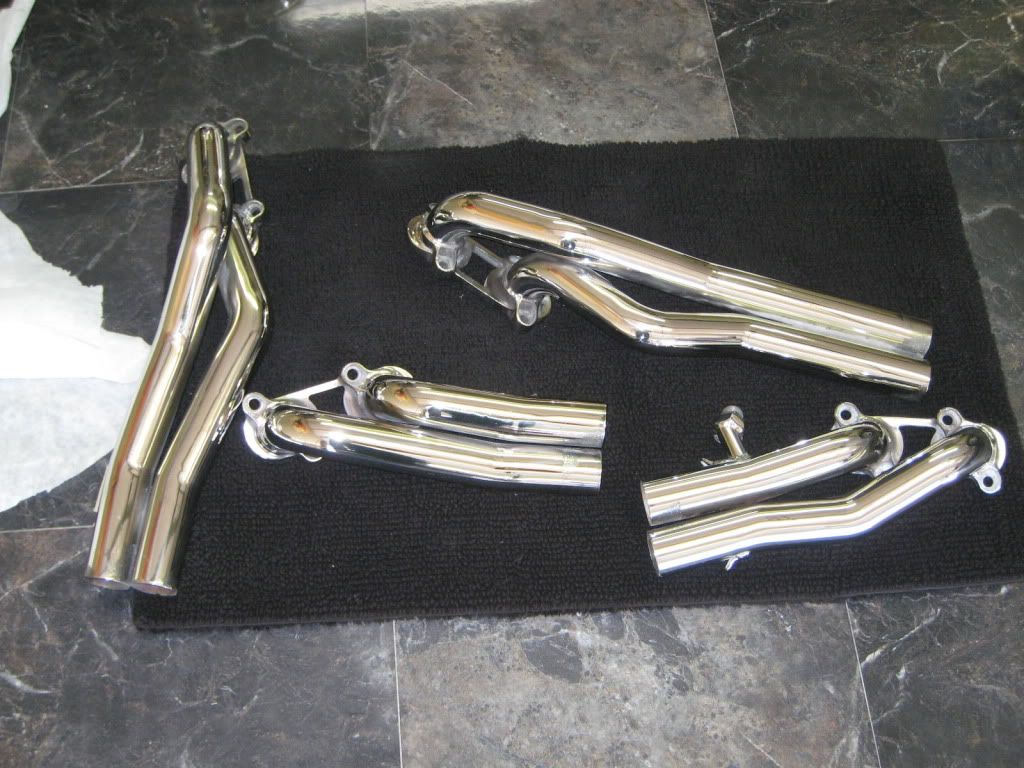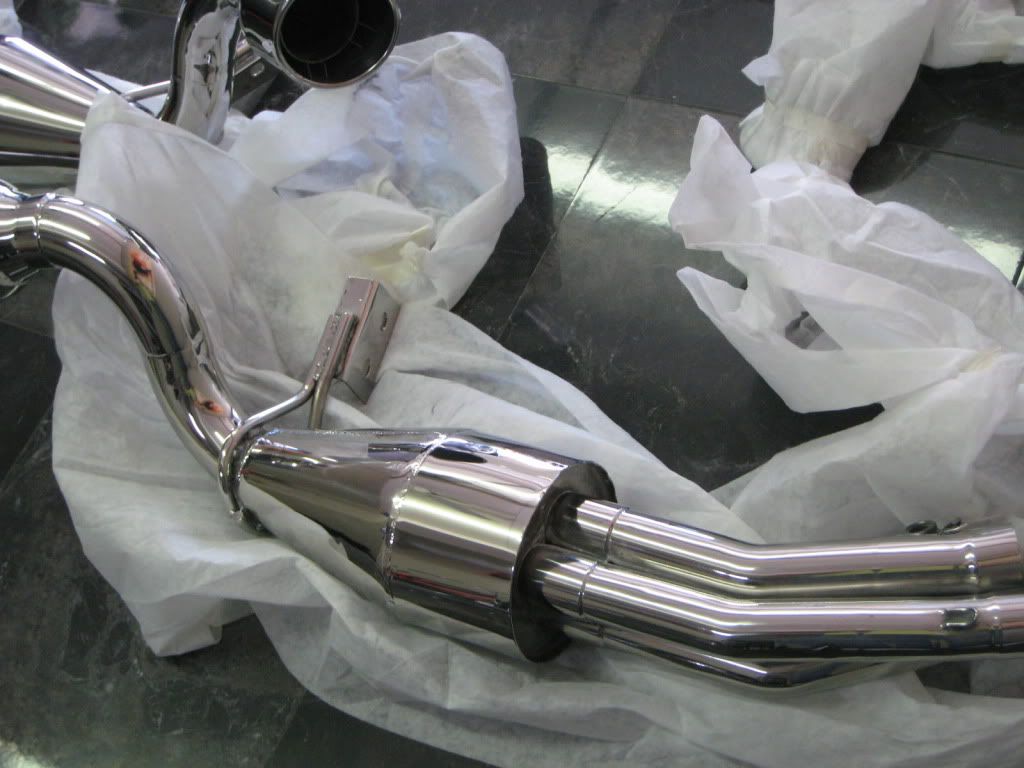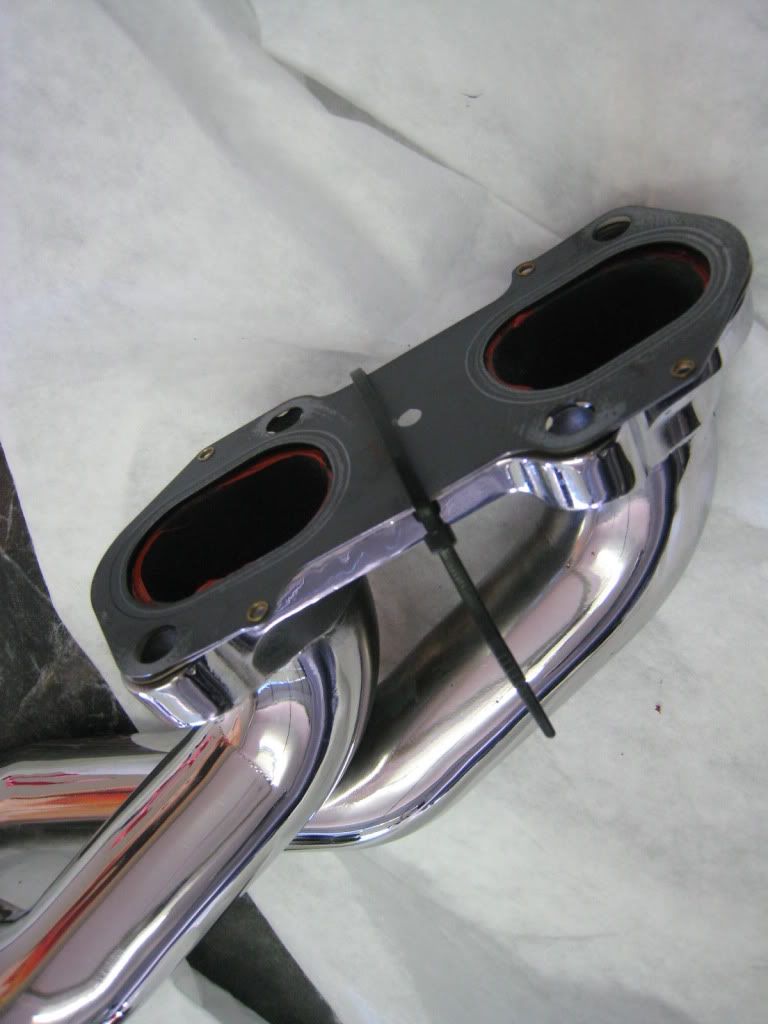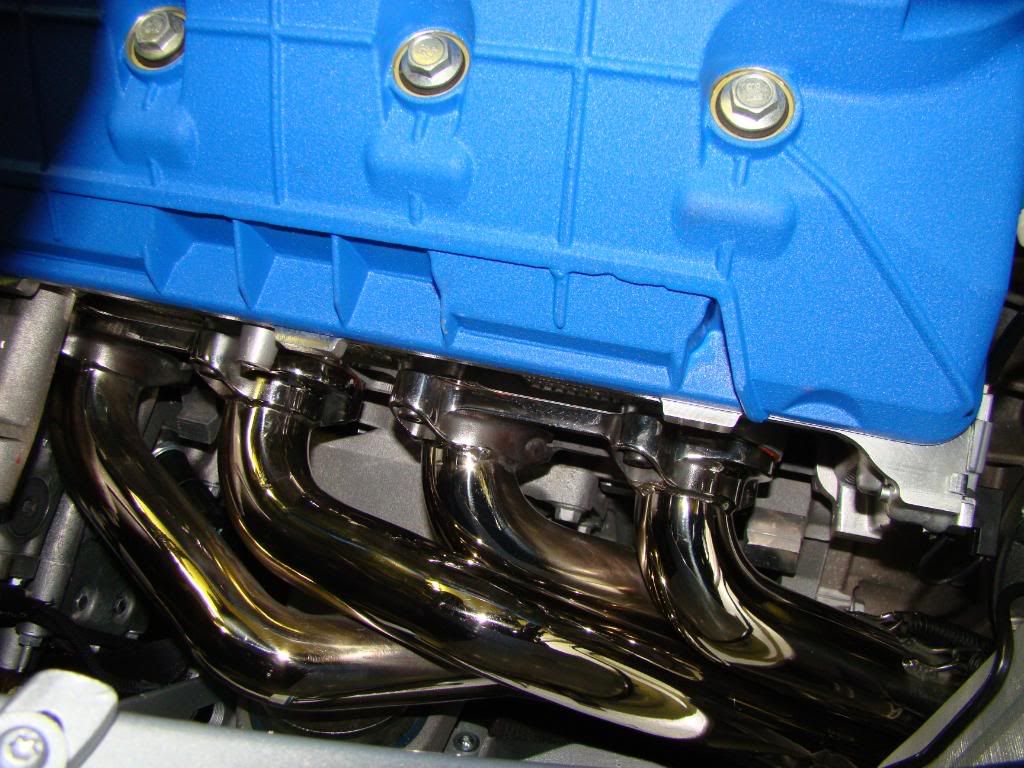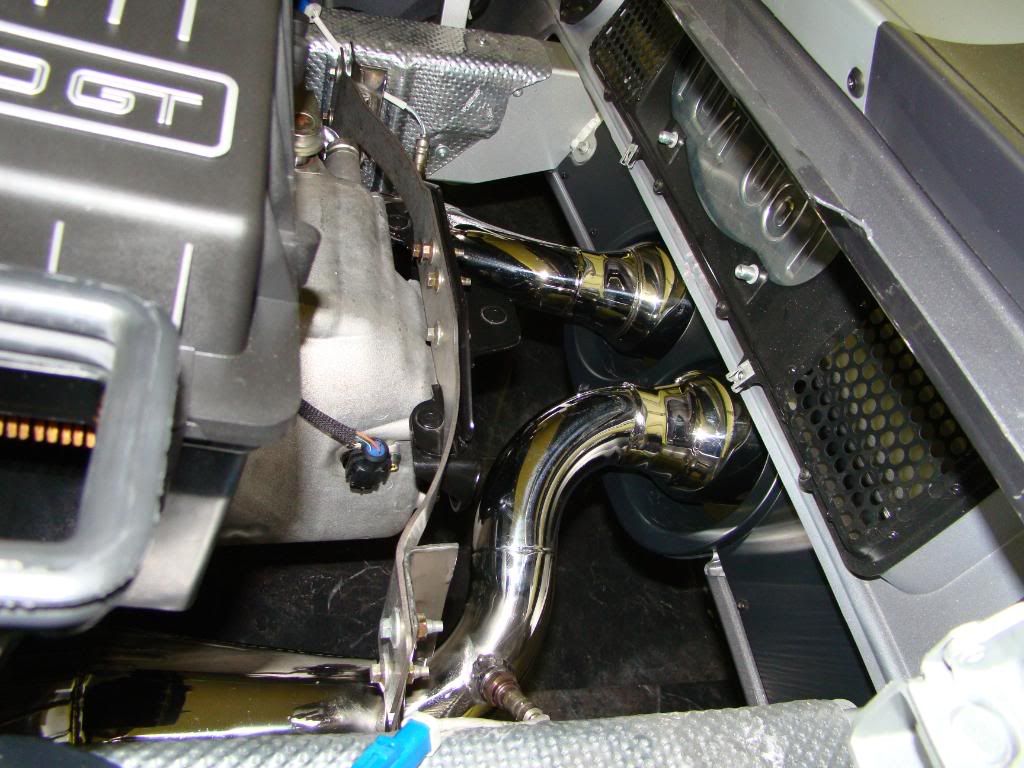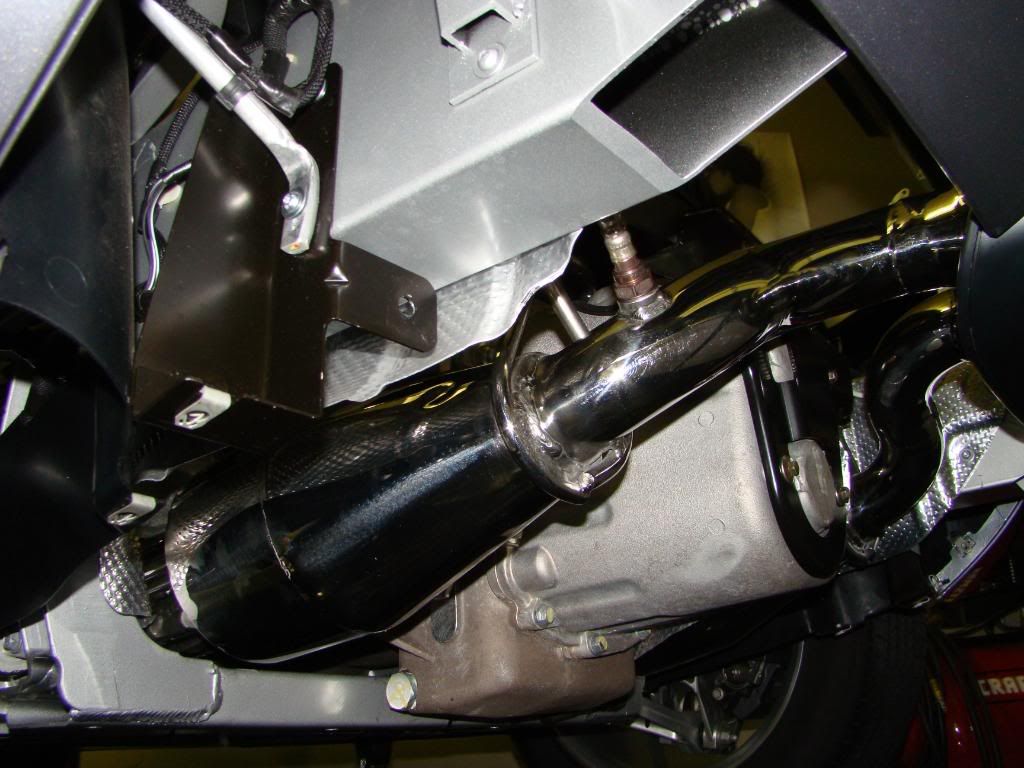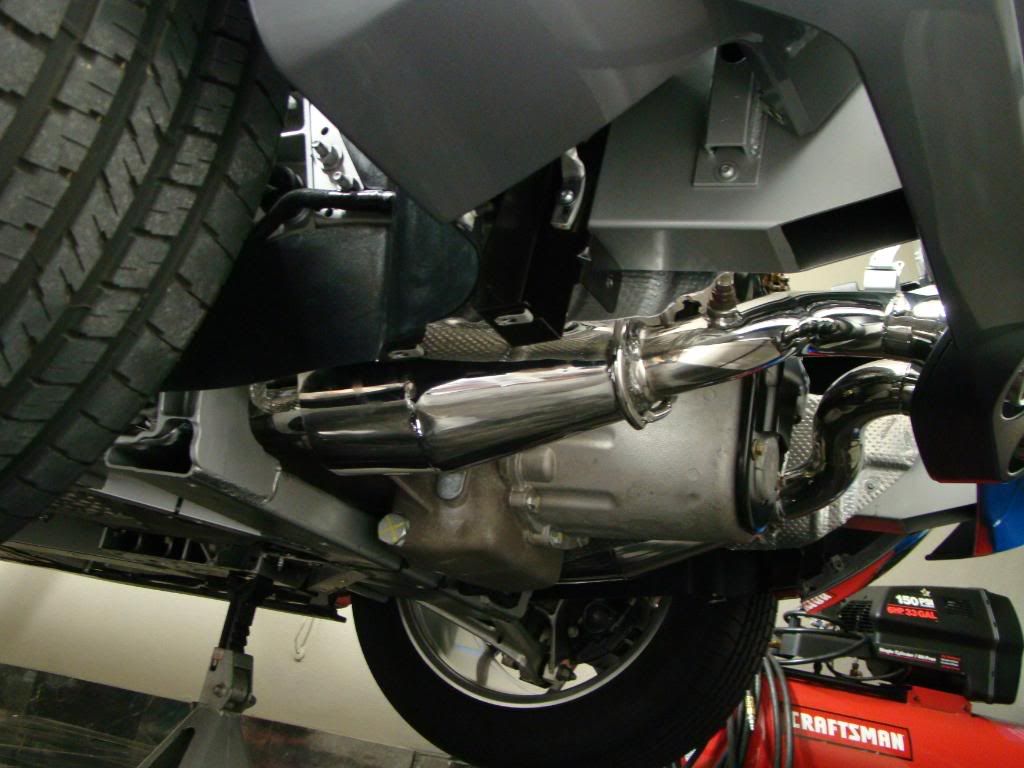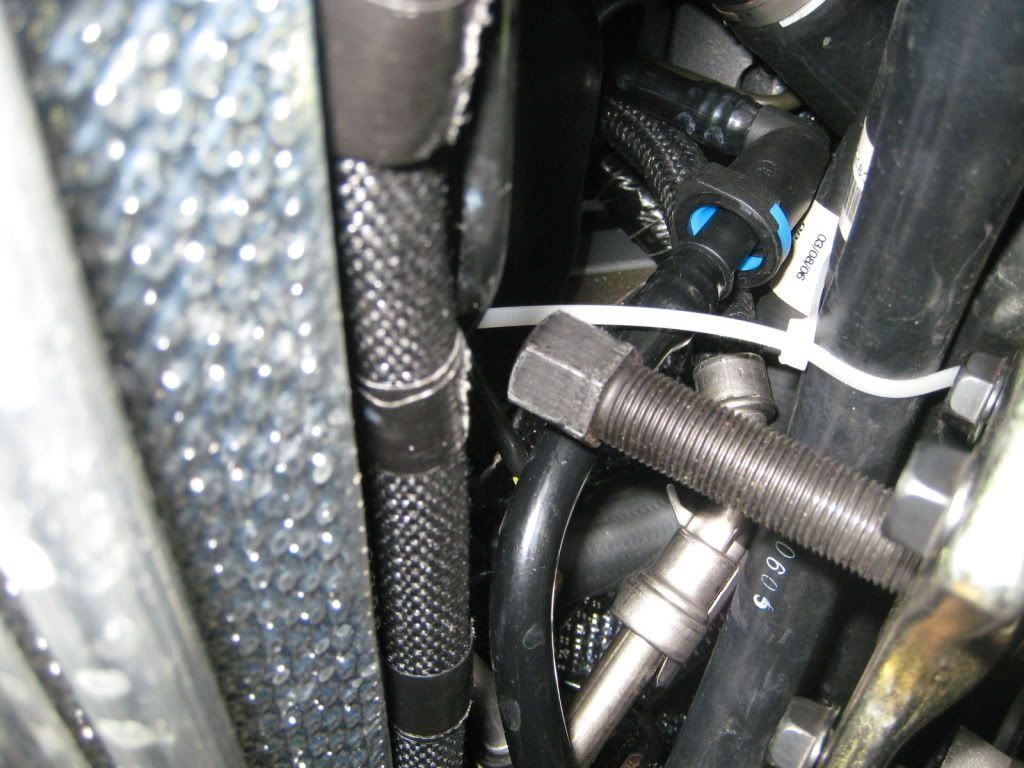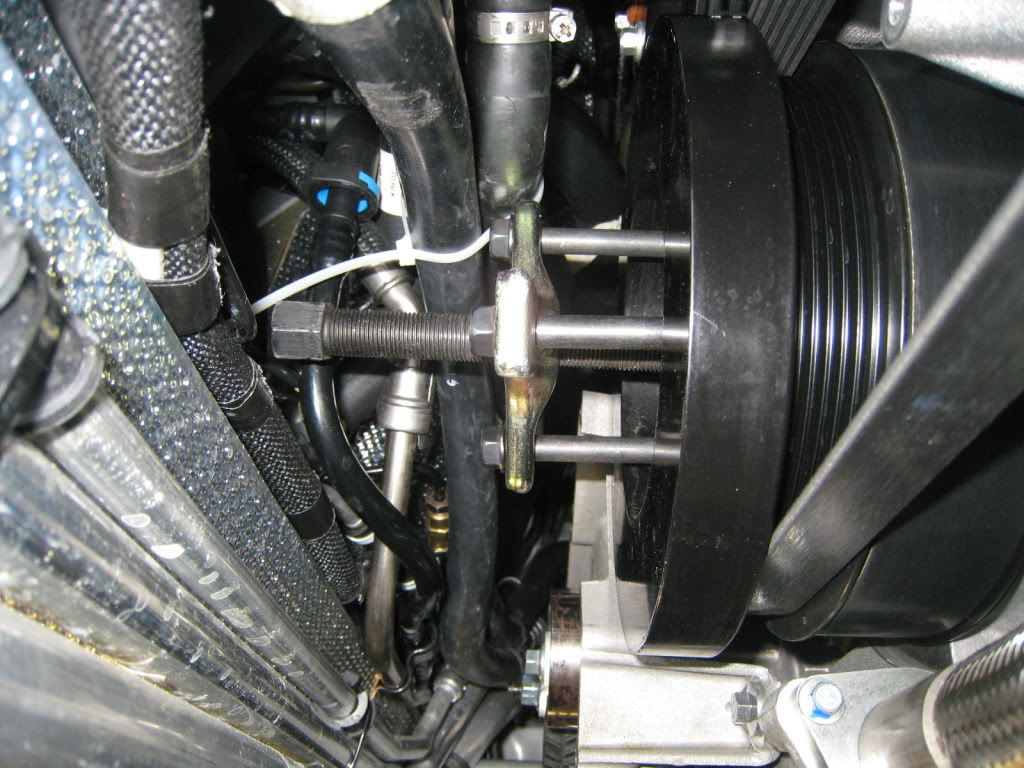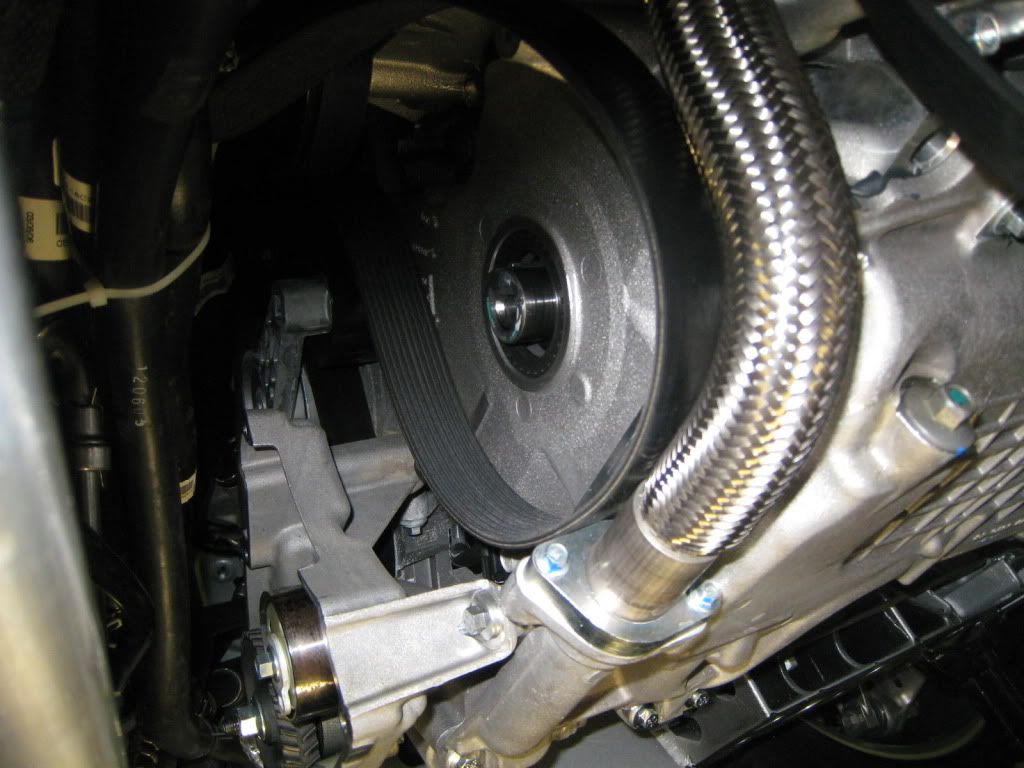Installing my FRPP Rear Exit kit then the balancer and Metco 2.80 upper
I have a lift but my Hot Street car has the Rear-end out so i decided to work on the floor which enough room for the job ,here is some pics
Got a local polish shop to polish Rear Exit KIt for me
This made install a little easier
It took a total of 11hrs to install the rear exit if you are going to do it right ,Taping, covering and removing the rear hatch and bumber and acc.
Removing the stock dampner was a straight foward process with standard tools and patience
This is the stock looking caterpillar balancer that is on all of 05-06 GT40 Supercars ,Innovative West is assmebling me a 10% lower balancer which will be ready tomorrow and i should reaceve by Friday and i will post pics of the install as well as the Metco Upper


